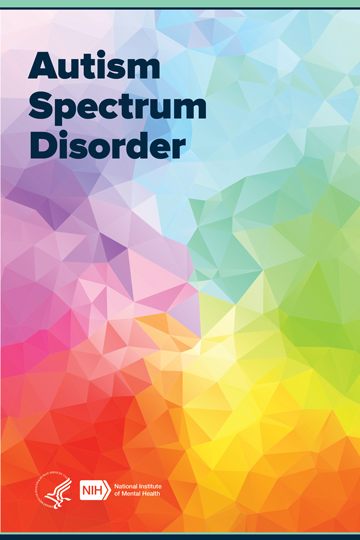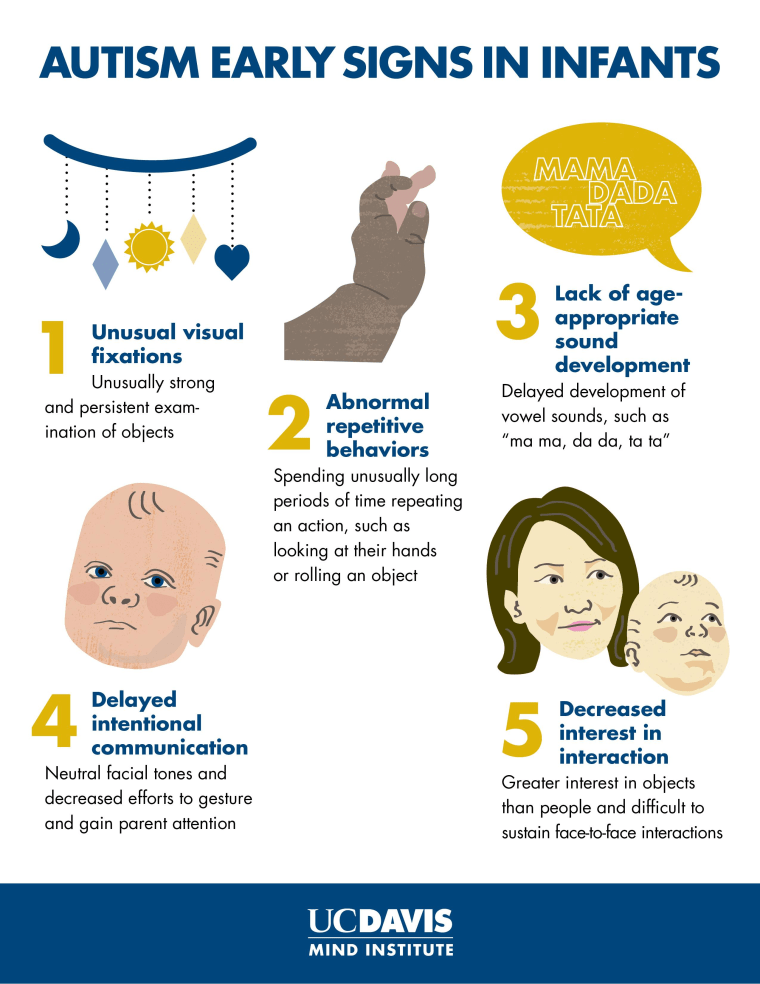The surprising strengths often seen by an Autism Therapist
The surprising strengths often seen by an Autism Therapist
Blog Article
Understanding the Effect of Behavioral Autism on Day-to-day Live and Social Communications
You may not realize exactly how deeply behavioral autism influences life and social interactions. People on the spectrum often navigate a world loaded with interaction difficulties and sensory overload. These difficulties can lead to irritation and isolation, affecting their relationships and general health. Comprehending these nuances is important for promoting supportive environments. What approaches can we carry out to create more inclusive rooms and purposeful links? The solutions could amaze you.
Specifying Behavioral Autism and Its Attributes
Behavioral autism, often described as autism spectrum condition (ASD), includes a series of conditions defined by difficulties in social communication, interaction, and repetitive habits. You may notice that people with ASD commonly battle to interpret social signs, which can result in misconceptions in discussions. They might find it difficult to develop eye get in touch with or engage in little talk, making social scenarios feel overwhelming.
Interaction difficulties can materialize in different ways, from postponed speech advancement to a preference for utilizing less words. By recognizing these traits, you can cultivate an atmosphere that advertises approval and urges reliable interaction, assisting individuals with autism grow in their daily interactions.
The Range of Autism: Comprehending Irregularity in Habits
Autism range problem (ASD) isn't a one-size-fits-all diagnosis; it differs commonly among people. You might run into people who are highly spoken and involve quickly in conversations, while others might favor solitary activities or interact non-verbally.
Additionally, the way people with ASD reply to sensory input can vary greatly; some could be overwhelmed by loud noises or bright lights, whereas others grow in promoting atmospheres. The spectrum likewise consists of distinctions in social interactions; some people may struggle to translate social signs, while others browse social settings with relative convenience. Recognizing this variability is important, as it aids you value each individual's one-of-a-kind experience and tailor assistance to their particular needs, promoting a much more comprehensive setting for everyone.
Interaction Obstacles Encountered by People With Autism
When you communicate with individuals on the autism spectrum, you may see their one-of-a-kind communication difficulties. They typically face problems with both spoken and nonverbal hints, which can affect their social interactions. Recognizing these obstacles is essential for cultivating far better connections and support.

Verbal Communication Difficulties
Lots of individuals on the autism spectrum experience verbal communication troubles that can significantly influence their daily communications. You could locate it testing to share your thoughts, feelings, or needs plainly. This can cause stress for both you and those around you, as misconceptions take place. You may have problem with initiating conversations, preserving a subject, or recognizing nuances in speech. Usually, you may like making use of simple language or recurring expressions, which can limit your capacity to take part in much deeper conversations. Your speed, tone, or volume may not straighten with social expectations, triggering others to misunderstand your purposes. Acknowledging these challenges can aid you and your assistance network create strategies to boost interaction and cultivate better links with others in your every day life.
Nonverbal Communication Obstacles
Spoken communication isn't the only obstacle individuals on the autism spectrum face; nonverbal communication obstacles can be equally as considerable. You might discover it tough to analyze body language, faces, and eye call, which are vital for reliable interaction. These difficulties can result in misconceptions or misinterpretations of social cues, making communications feel overwhelming or confusing. You might struggle to reveal your own emotions through nonverbal means, leaving others not sure of your sensations or intentions. This detach can develop sensations of seclusion and aggravation. Recognizing these obstacles is critical for promoting understanding and compassion in your interactions. By dealing with nonverbal communication, you can find techniques to boost your social experiences and boost your overall lifestyle.
Social Communication Effects
Social communications can commonly really feel overwhelming as a result of the one-of-a-kind communication challenges encountered by individuals with autism. You could battle with interpreting social cues, making it difficult to comprehend mockery or body language. This can result in misunderstandings or uncomfortable minutes in conversations. In addition, initiating and maintaining discussions may really feel tough, creating stress and anxiety in social situations. You might choose organized environments, making spontaneous interactions unpleasant. It's likewise typical to experience difficulty in participating in small talk, which can prevent developing brand-new relationships. Identifying these difficulties can help you locate techniques to improve communication, such as practicing social abilities in safe settings or making use of aesthetic help - Aba Therapist. Recognizing your demands permits you to navigate social communications with better confidence and simplicity.
Social Interaction and Relationship Structure in Autism
While structure partnerships can be testing for individuals with autism, comprehending their unique perspectives and interaction styles can foster purposeful links. You could notice that lots of individuals on the spectrum prefer straight communication and may battle with social hints or tiny talk. By being simple in your interactions, you can assist produce a setting where they feel comfy.
Make the effort to observe and pay attention exactly how they reveal themselves. This understanding can guide you in steering conversations much more successfully. Taking part in shared interests can also act as a bridge to deeper links. Whether it's a hobby, a favorite show, or a mutual interest, these common strings can open up doors to friendship.
Day-to-day Live Routine: Navigating Challenges and Methods
Maneuvering day-to-day life routines can be especially challenging for people with autism, particularly when unanticipated modifications take place. You might discover convenience in having an organized routine, as it assists you expect what's next. When disturbances happen, it's normal to feel overloaded or visit the site distressed. To navigate these challenges, think about implementing aesthetic timetables or lists. These devices can provide quality and reassurance.
Establishing a routine that includes sensory breaks can likewise be valuable. You can plan time-outs throughout your day to reenergize. It's vital to interact with those around you, allowing them know your preferences and demands. This helps develop an understanding setting.
Lastly, practice mindfulness strategies to manage stress and stress and anxiety. Easy breathing exercises or basing techniques can make a significant distinction. By incorporating these approaches, you can boost your everyday regimen and reduce disturbances, making life really feel extra manageable.
Toughness and Capacities of People on the Autism Spectrum
Comprehending daily life routines is simply one element of the autism experience. Several individuals on the autism spectrum possess amazing staminas and capacities that set them apart.
Additionally, your memory skills usually shine, especially in areas of passion. Autism Spectrum Therapies. This knack for keeping info can make you an important resource in fields like innovation, art, or scientific research. You may additionally display strong aesthetic thinking, allowing you to envision complex principles and fix troubles artistically
Additionally, your special viewpoint on the world can foster compassion and understanding in others, enriching social interactions. Accepting these staminas not just increases your self-confidence but additionally assists others value the diverse abilities you bring to the table.
Creating Comprehensive Environments for People With Autism
Producing comprehensive atmospheres for individuals with autism starts with designing sensory-friendly areas that deal with their distinct demands. You can additionally cultivate opportunities for social interaction, assisting to develop friendships and connections. By making these modifications, you'll add to an extra inviting environment for everyone.
Creating Sensory-Friendly Spaces
While creating sensory-friendly areas, it's vital to review the special needs of people with autism. Start by choosing soothing shades and soft lights to develop a relaxing atmosphere. Integrate quiet zones where individuals can retreat and recharge when bewildered. You'll wish to reduce loud sounds and distractions, utilizing soundproof products or white sound makers to help preserve harmony. Think about responsive components like soft textiles or fidget-friendly things that can supply convenience. Identify that rooms are flexible, enabling very easy reformation to suit various activities. Ultimately, consist of aesthetic routines or clear signage to aid individuals navigate the space confidently. By attentively integrating these aspects, you can develop a welcoming atmosphere that supports sensory demands and promotes total wellness.
Advertising Social Communication Opportunities
Designing sensory-friendly rooms not only addresses private convenience yet additionally sets the phase for meaningful social interactions amongst individuals with autism. To promote these interactions, produce comprehensive settings that welcome participation. Organize organized activities, like art courses or group games, that encourage cooperation without overwhelming sensory input. Usage aesthetic aids and clear interaction to help every person engage conveniently. Encourage peer mentoring, pairing people with autism with supportive peers that can guide them through social situations. Additionally, consider holding regular community occasions that commemorate neurodiversity, cultivating acceptance and understanding among all participants. By applying these strategies, you can boost social chances, assisting people with autism construct friendships and reinforce their social abilities in a secure, welcoming environment.

Frequently Asked Concerns
How Can Buddies Support Someone With Behavioral Autism?
You can support a pal with behavior autism by holding your horses, paying attention proactively, and appreciating their limits. Participate in tasks they delight in, interact openly, and produce a comfy environment where they really feel valued and comprehended.
What Resources Are Offered for Parents of Kid With Autism?
You can check out numerous sources for parents of kids with autism, including assistance groups, instructional sites, and regional social work. Getting advice in touch with various other moms and dads can likewise provide useful understandings and shared experiences to help browse difficulties.
Can Behavioral Autism Change With Time?

Yes, behavior autism can transform over time. You could notice shifts in communication, social skills, and habits as your youngster grows. Early intervention and assistance often play crucial roles in these developing modifications.
How Do Sensory Sensitivities Influence Daily Life?
Sensory sensitivities can make everyday experiences overwhelming. You may have problem with intense lights or this contact form loud noises, causing tension or avoidance. Finding environments that fit your requirements can substantially enhance your comfort and total life.
What Prevail Misconceptions Regarding Behavioral Autism?
You may think behavioral autism only impacts interaction skills, however it's more complicated. Lots of think individuals do not have compassion or intelligence, which isn't true. Comprehending these mistaken beliefs helps foster approval and support for those on the spectrum.
Behavior autism, typically referred to as autism spectrum disorder (ASD), encompasses a variety of problems identified by challenges in social communication, interaction, and repeated habits.Social communications can often feel frustrating due to the distinct communication difficulties encountered by individuals with autism.Creating sensory-friendly areas not only addresses specific convenience but additionally establishes the stage for meaningful social communications among people with autism. Urge peer mentoring, matching individuals with autism with helpful peers who can assist them with social situations. By applying these methods, you can improve social possibilities, aiding people with autism develop relationships and enhance their social skills in a risk-free, welcoming atmosphere.
Report this page